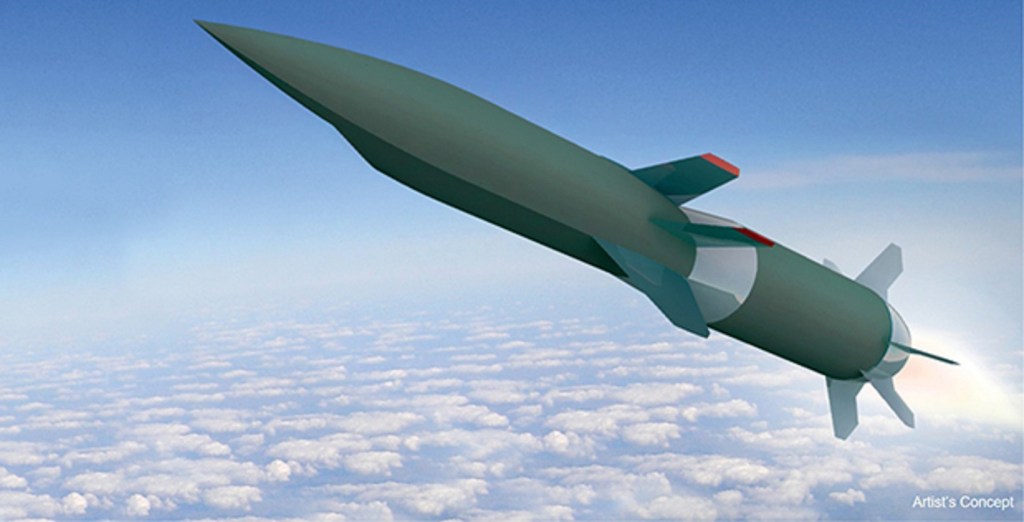DARPA and the U.S. Air Force successfully test fired a Hypersonic Airbreathing Weapon Concept (HAWC) on Monday. This is the second time this kind of advanced missile has been test fired in America and represents the efforts of its military to compete with China and Russia, the latter of which has promoted its own hypersonic missiles as being “unbeatable” weapons to cow the West.
Hypersonic weapons travel between 5 and 25 times the speed of sound, allowing them to evade defenses. The HAWC was built by Lockheed Martin in partnership with DARPA, the Pentagon’s blue-sky research agency, and the Air Force research lab. It flew at Mach 5, went higher than 60,000 feet, and traveled more than 300 miles. DARPA made the announcement on Monday.
Videos by VICE
The weapon was launched from a B-52 bomber. It used an initial boost rocket before its own internal engine kicked on and it started breathing air. Such missiles use a mix of high density hydrocarbon fuel and air from the atmosphere to power their engine. This makes them smaller, lighter, and more efficient weapons.
The idea behind hypersonic weapons is that they’re so fast they can avoid traditional missile defense systems. Some are also supposed to be more maneuverable. Russia, China, and the U.S. are all working on hypersonic glide re-entry vehicles that allow missiles—some of them nuclear capable—to go at high speeds while also changing trajectory and being unpredictable.
In January, Russia deployed a hypersonic missile on its frigate Admiral Gorshkov and sent the ship on a tour of the world’s oceans. Moscow has also said its “Satan 2” intercontinental-ballistic missile is capable of carrying hypersonic nuclear weapons.
The rush for new kinds of missiles is a direct result of these signals. Lockheed’s HAWC is only the second successful test of the new weapon in the United States. The other came from Raytheon. Defense contractors are rushing to design and deploy hypersonic weapons after the Pentagon decided to accelerate development of them.
There’s questions about how effective these weapons would be in a real war, but that hasn’t stopped Russia, China, and America from building them. “The HAWC program created a generation of new hypersonic engineers and scientists,” HAWC programg manager Andrew Knoedler said in a DARPA press release. “HAWC also brought a wealth of data and progress to the airbreathing hypersonic community. The industry teams attacked the challenge of scramjet-powered vehicles in earnest, and we had the grit and luck to make it work.”




